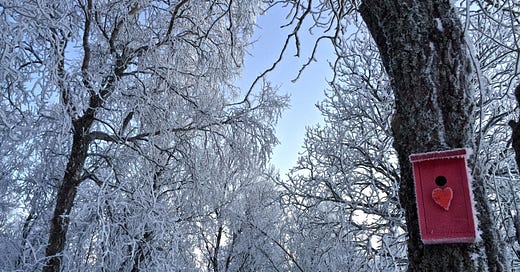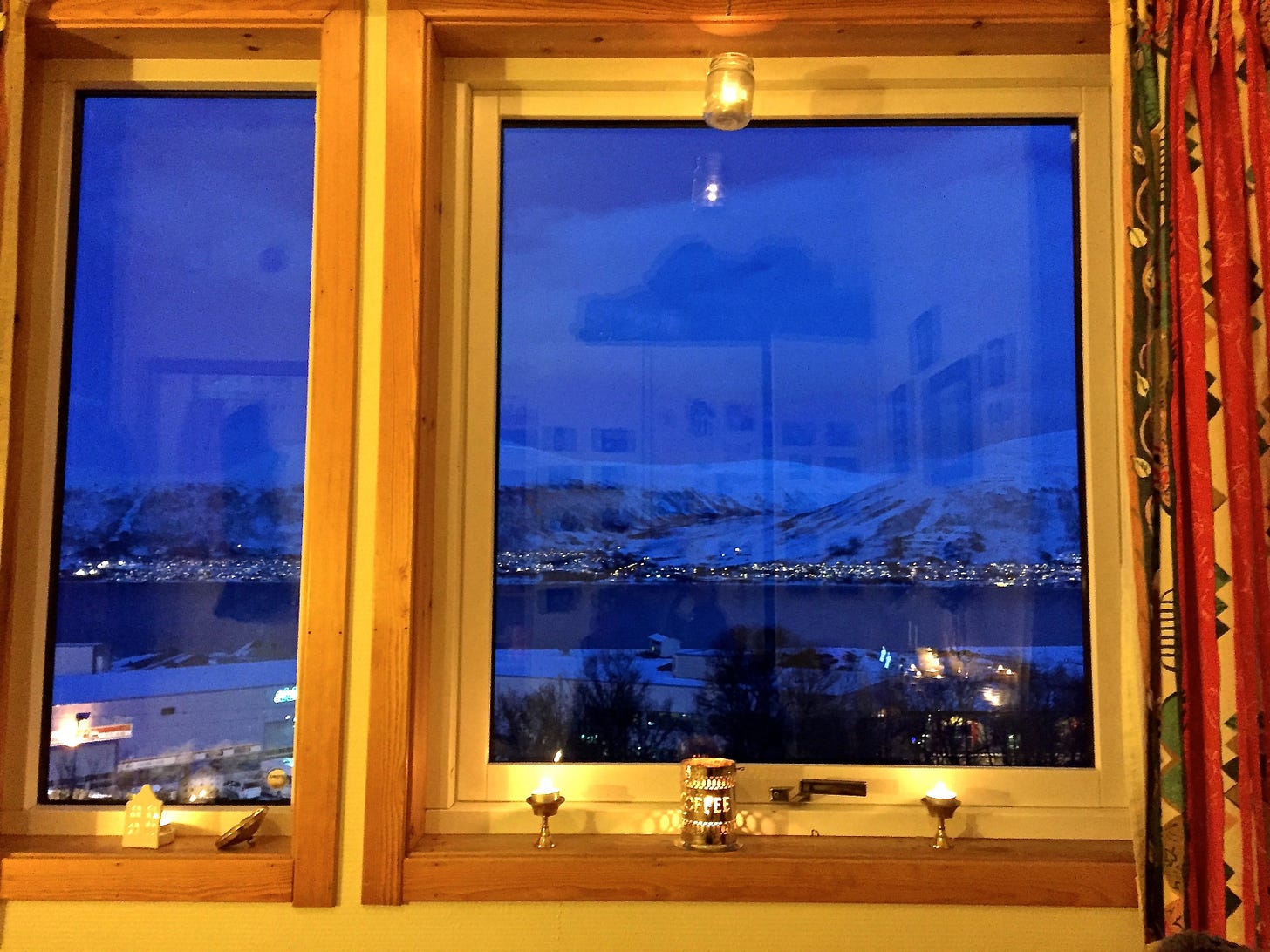A note about this newsletter:
If you’re here, you might know this already: in 2014 I moved to the Arctic. I spent the year living in Tromsø, Norway - a city so far north that for two months each winter, the sun doesn’t rise. I spent that year studying wintertime mindsets, and found that people in Norway see, and experience, winter differently: by embracing all the season has to offer, they view winter as full of opportunity.
What was meant to be a one-year research project has become bigger than I could have imagined. I’ve written about this research in The Atlantic, The New York Times, and The Washington Post, and my work has been covered in outlets from National Geographic to Full Circle with Anderson Cooper. Throughout my psychology PhD program at Stanford University, while I was researching how to harness our mindsets to improve health and wellbeing, a pattern emerged: each year, as the days got shorter and the temperature dropped, my inbox would fill with podcast and radio invitations, requests to speak with journalists, and letters from readers sharing their thoughts on my articles. Year after year, people wanted to talk about my time living in the Arctic and the idea that our mindsets can influence our experience of winter. Winter lovers ask for advice for making the most of the season. Winter haters just want tips for making this time of year suck a little less.
Now, I’m thrilled to announce that I’m writing a book to help people around the world change their mindsets about winter. How To Winter: Harnessing Your Mindset to Embrace All Seasons of Life will be published in fall 2024 by Penguin Random House in the US, by Pan Macmillan in the UK, and (so far) will be translated into Romanian and Dutch as well! How To Winter will blend cultural insights and scientific research to give readers concrete practices and strategies for changing your mindset, embracing winter, and finding joy in the cold and dark.
The goal of my bi-weekly (that’s every other week), seasonal newsletter will be to preview some of the tips and strategies from my book to help you cultivate a more positive wintertime mindset, embrace winter, and feel more joy, coziness, and wonder during the season.
If you’re not subscribed already, you can do so here:
Now, onto the good stuff:
Here’s your first challenge: Embrace the end of Daylight Saving Time.
If you’re living in the U.S., this weekend marks the end of Daylight Saving Time. (If, like me, you’re currently living in Europe, you’ve already changed the clocks!) In my experience, the change is met with some initial relief at getting an extra hour of sleep on Saturday night, and then a lot of grumpiness in the following week, punctuated by remarks to co-workers and family members of “It gets dark out so early now,” and “It’s only 6:30!? I thought it was 10pm!”
Like so much of winter, the end of Daylight Saving Time seems to sneak up on us. Despite being right there, on the calendar, sandwiched in-between meetings and dinner plans and dentist appointments, it somehow manages to take us by surprise. And while this might be our last ever end of Daylight Saving Time, it’s still a chance to practice welcoming the changing seasons.
For the next two weeks, your challenge is to actively embrace the end of Daylight Saving Time. Instead of fighting or bemoaning the change in daylight, your challenge is to welcome it, and lean into the changing of the seasons. I’ve provided a smorgasbord of options for you to choose from below: select one or two to try, or mix and match your favorites.
Part 1: Set your expectations and lean into rest next week:
Changing your mindset can start with setting your expectations. Think of next week as a transition week. Transition weeks are not always weeks where you are operating at 110%, but instead help you ease into a new season, slow down, and take stock.
Anticipate feeling more tired next week. If possible, give yourself a light week: scale back on unnecessary meetings and appointments to make space for the transition.
Adjust your sleep schedule: now is a great time to indulge in rest. If you feel tired earlier, see if you can get to sleep earlier. If you wake up earlier, enjoy the morning. If you sleep more than usual, congratulate yourself on giving your body the rest it needed.
Note: If you have kids or other caregiving responsibilities, getting more sleep can be easier said than done. Know that this may be a difficult week, and make space for schedules to shift or be out of whack for a little.
Part 2: Embrace the clock change by finding opportunity in the darkness:
Pick one or two of these to try next week and then continue them the following week.
Mark the earlier sunset with a cozy daily ritual: light some candles (in my case, half a dozen or so) or make a good pot of tea. If you uphold a 9-5 work schedule, take an end-of-workday sunset walk or get yourself a little treat (a cookie rarely makes things worse).
It’s candle season! Try to use only soft lighting for workouts, eating dinner, showering and bathing, and watching TV in the evening. Instead of fighting the darkness, low lighting uses the darkness to help set the mood.
Plan one thing to look forward to next week. For those needing downtime, plan a special night at home: a long bath, a new videogame or book, a favorite movie, or cooking comfort food. For those who need to socialize to energize, arrange to meet friends for dinner at a beloved spot or have people over for game night. The key is to make it special: whether by yourself or with family or friends, make it a real plan and give yourself something to anticipate.
I want to hear what you do and how it goes. Did you come up with something else that I haven’t mentioned here, a new way to embrace the end of Daylight Saving? I’m all ears. You can share your experience here, or email me directly at kari@karileibowitz.com
Stay cozy,
Kari
Notes from the slush pile:
Having a hard time leaning into rest? It can be helpful to remind ourselves of what the Nap Bishop & Founder of The Nap Ministry, Tricia Hersey, writes: “You don’t have to earn rest.” Her new book Rest Is Resistance, is out now, and I can’t wait to read it lying down.
Curious to learn more about the Polar Night? I had the chance to interview “Cecilia, who lives on an island close to the North Pole,” about her life on Svalbard and what she loves about winter. Check out her TikToks at @sejsejlija and her YouTube channel for a firsthand look at life in the world’s northernmost town.
My current cozy obsession is a teapot I have that has an iron base where you can put a little candle inside - keeps my tea warm for ages while I’m working at my desk and is so vibey. Is that why they call those little candles tea lights!? Mine looks like this.







Kari is well qualified to comment on tha mindset recommended to cope with winter and many other life challenges. I took her class at Stanford and she has terrific insights
Hooray!!!! More Kari Leibowitz for my Winter 2022/3! Fantastic news.